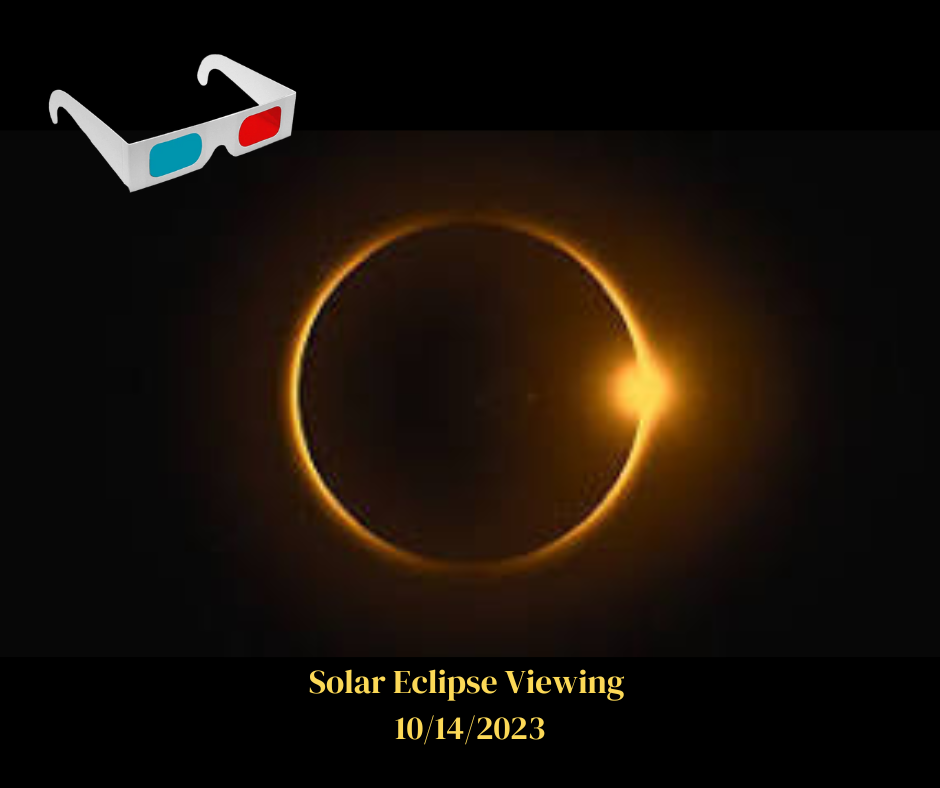On Saturday, October 14, an annular (“Ring of Fire” as if the moon is outlined with flames) solar eclipse will cross over North America, Central America, and South America. An annular solar eclipse happens when the moon passes between the sun and the earth. While this is an exciting and unique experience, it is crucial to prioritize safety when seeing an annular eclipse.
During an annular eclipse, it is never safe to look directly at the sun without eye protection specifically designed for solar viewing. Failure to protect the eyes while looking at the sun during a solar eclipse can result in “eclipse blindness” or solar retinopathy, causing damage or destruction to the cells in the retina.
Everyday sunglasses, even very, very dark ones are not safe for looking directly at the sun. Specialized solar eclipse glasses are about 100,000 times darker than regular sunglasses. Solar eclipse glasses should be labeled as IS012312–2 international standard compliant. Eclipse glasses and handheld viewers should always be inspected before use. If torn, scratched, or otherwise damaged, discard the device.
When viewing the sun through a camera lens, binoculars, or a telescope using a polarizer does not offer enough protection, it is best to use a special-purpose solar filter. Viewing any part of the bright Sun through a camera lens, binoculars, or a telescope without a special-purpose solar filter secured over the front of the optics will instantly cause severe eye injury. By design, these lens-based devices intensify light rays, damaging both the solar filter and your eyes.
Another concern with a solar eclipse is to protect your skin from invisible UV rays. If you are viewing the eclipse, you may be in the sun for hours. Remember to apply sunscreen and wear protective clothing to prevent skin damage. Sunburn is the skin’s reaction to UV radiational damage to the outermost layers of skin. Sun tanning is a sign of the skin reacting to potentially damaging UV radiation by producing more pigmentation. The pigment known as melanin provides the skin with its color and protects the skin against the sun’s rays.
The solar eclipse will only be 30% visible in southwestern Pa. starting at 11:53 AM for a duration of 2 hours and 40 minutes.
Sources:
www.planetary.org
www.nasa.gov
www.aao.org
www.aas.org
#visionsourcesouthhills
#DrClaudiaWendel
#PittsburghOptometrist
#PittsburghEyeCare


